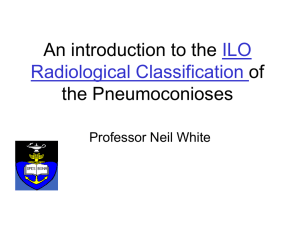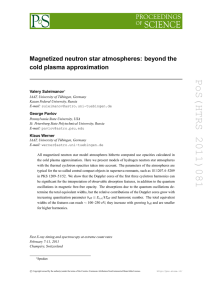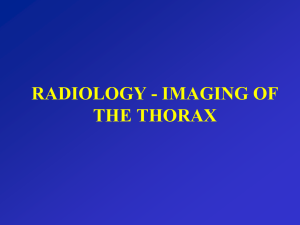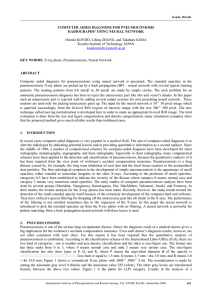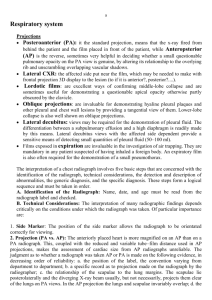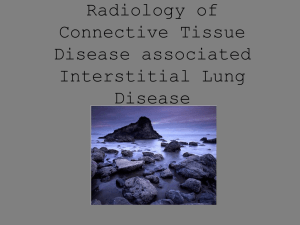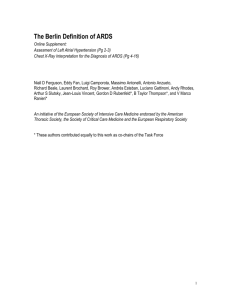INTERPRETATION OF OCCUPATIONAL CHEST X-RAYS
advertisement
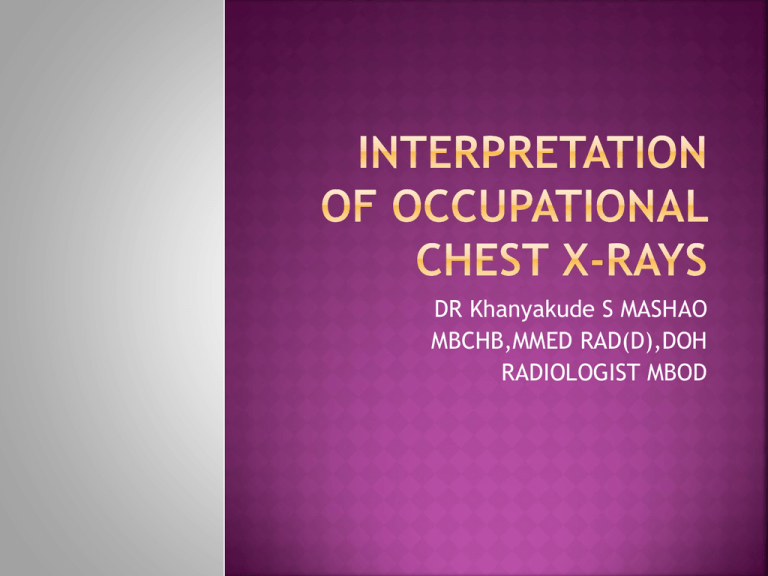
DR Khanyakude S MASHAO MBCHB,MMED RAD(D),DOH RADIOLOGIST MBOD Good quality radiographs are essential for accurate diagnosis and classification of occupational lung diseases A reader is expected to grade film quality. Grade1 :Good Grade 2 :Acceptable with to technical defects to impair classification. Grade 3: Acceptable with technical defects but still adequate Grade 4 Unacceptable with quality defects Quality defects include Under-inflation Improper position Artifacts Over-exposure Film processing/post processing in case of digital Under-exposure Small opacities: small opacities are classified according to shape and size Small rounded opacities P up to 1.5 mm Q about1,5 mm to 3mm R exceeding 3mm Small irregular opacities Small irregular opacities are classified by width as s , t or u( same respective sizes as for small rounded opacities Lung zones: each lung is divided into upper ,middle and lower zones Profusion: The concentration of small opacities are classified on the 4 point major category( 0,1,2 or 3. With each major category divided into 3 giving 12 12 order sub categories of increasing profusion(0,0/1,1/0,1/1,1/2,2/1,2/2,2/3, 3/2,3/3 and 3/+ Category 3 represents most profuse The major category(first number) represents the profusion best fit the film. The minor category(second number) represents the profusion seriously considered as an alternative Category 0 refers to absence of small opacities LARGE OPACITIES:A large opacity is defined as any opacity greater than 1cm Category A:One or more large opacities whose combined dimension does not exceed 50 mm Category B: :One or more large opacities with a combine dimension that exceed 50mm but does not exceed the equivalent area of the right upper lobe. Category: exceeds the equivalent area of the right upper lobe. Pleural abnormalities are reported with respect to the type Pleural plaques or diffuse thickening Location: chest wall, diaphragm Presence of calcification Width: only of in profile pleural thickening seen along the chest wall edge Extent: combined distance for involved chest wall There are about 29 symbols representing important features related to dust diseases and other etiologies e.g. : tba: active TB, em: emphysema ,es: eggshell, hi : hilaradeno-pathy, ef: effusion. Finally the reader comments on any other abnormal feature in the chest radiograph The differential diagnosis of a diffuse reticulonodular infiltrate: • Pneumocystis carinni • Miliary tuberculosis • Lymphocytic interstitial pneumonia • Kaposi’s sarcoma • Sarcoidosis • Toxoplasma gondii • Cytomegalovirus * Thus needs investigation
